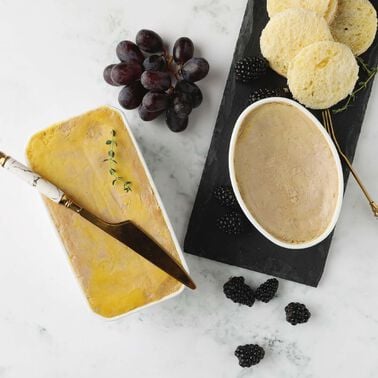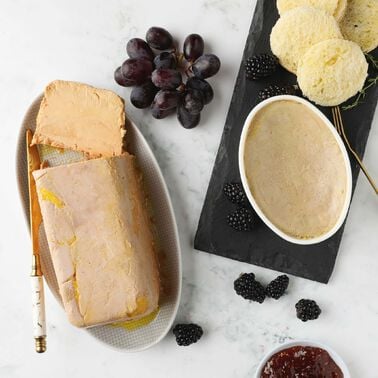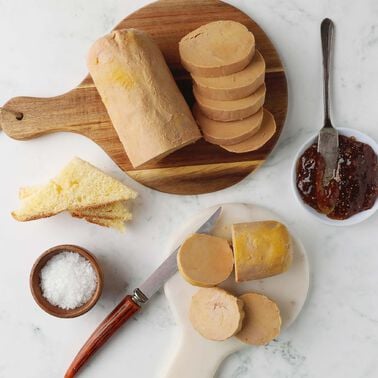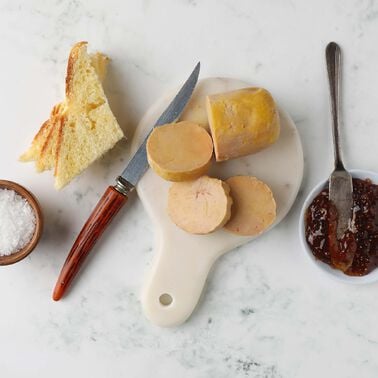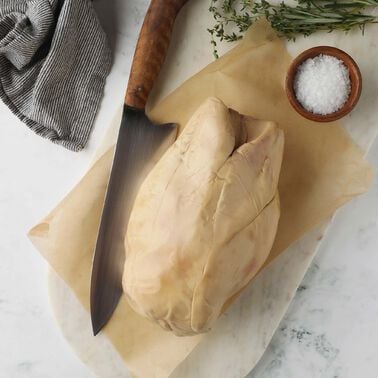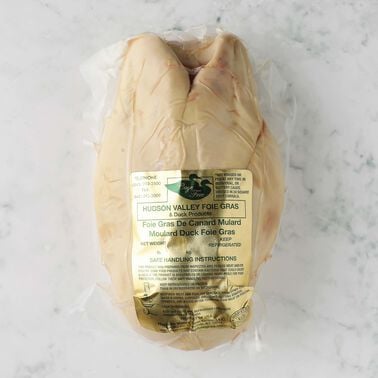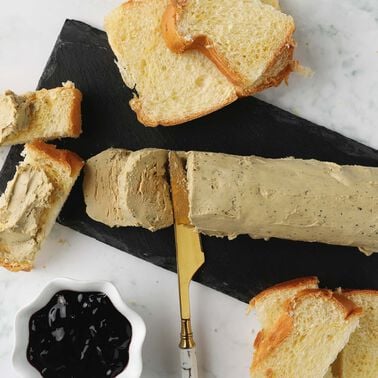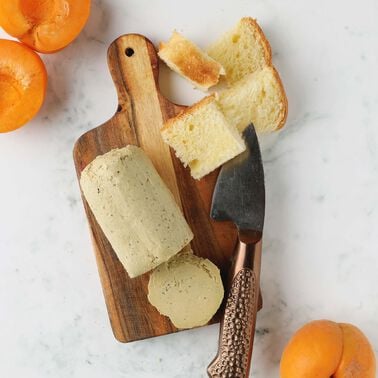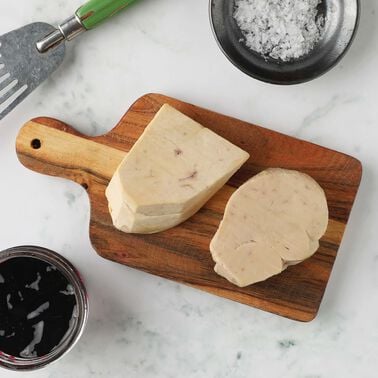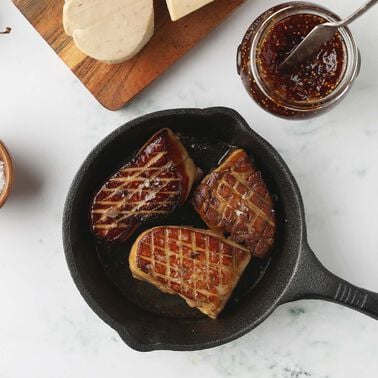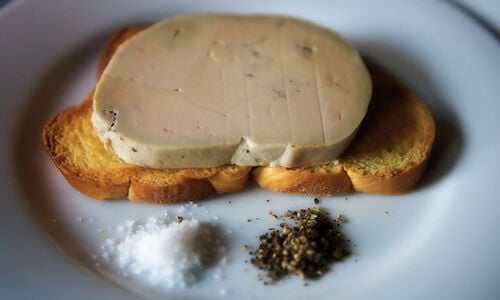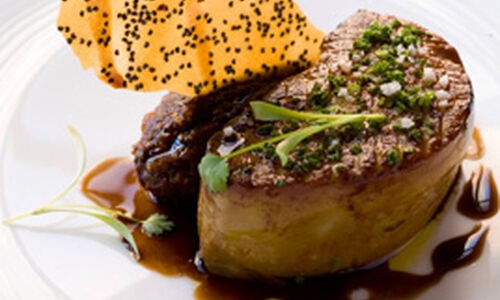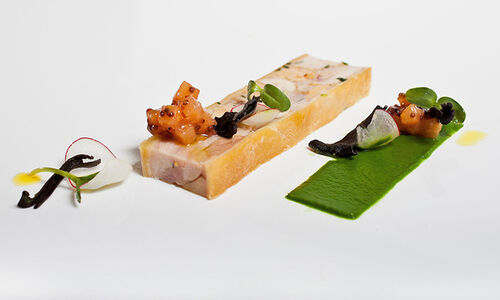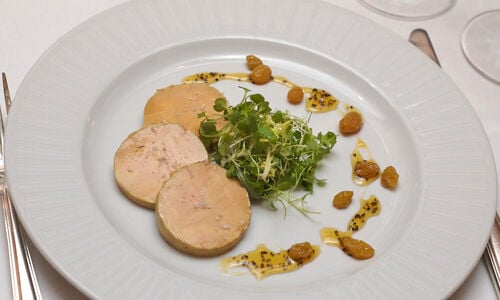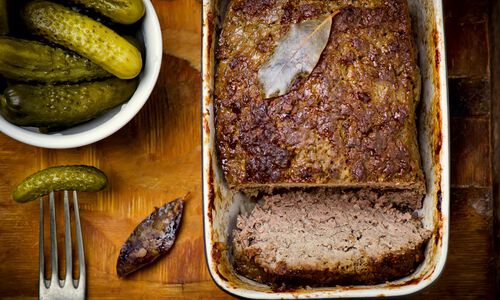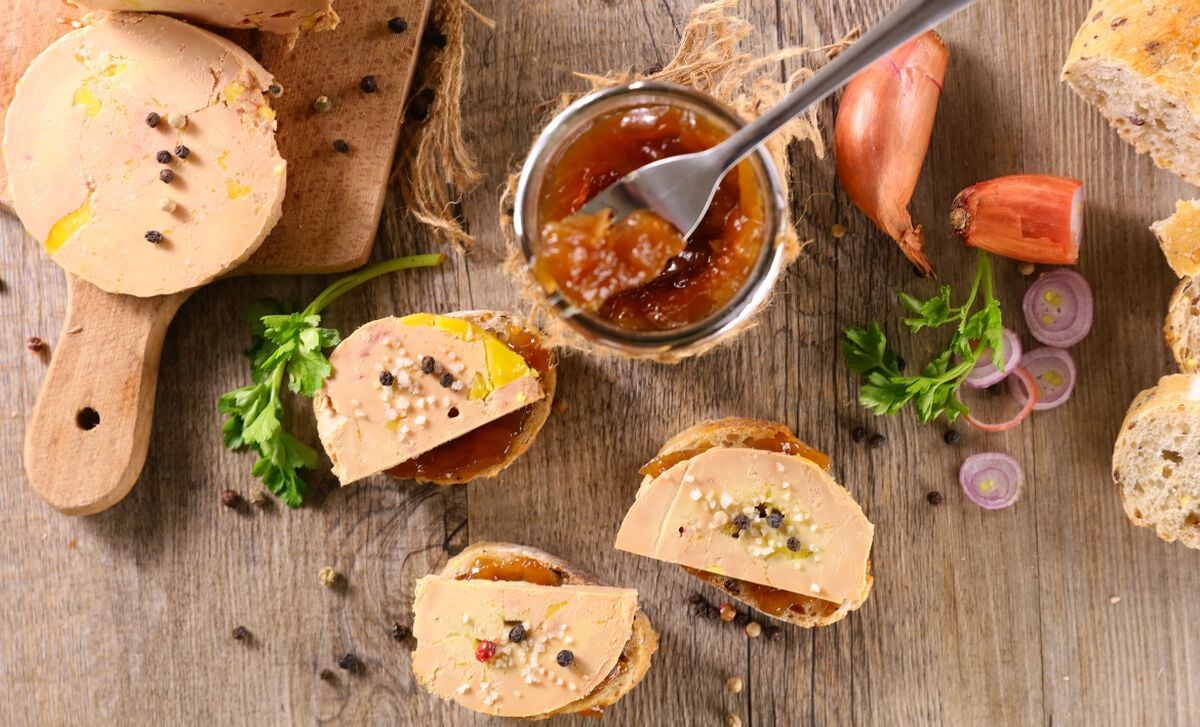
What is Foie Gras Terrine?
A foie gras terrine is cooked in a terrine mold, usually a porcelain one with a tightly-fitted lid. Terrine, the preparation, is the purest experience of foie gras since the whole raw liver is packed into a terrine mold and cooked at low temperature in a water bath. There are very few ingredients to distract from the rich, buttery taste of pure foie gras: salt, pepper, and Sauternes wine, that wonderful sweet white wine from France (or sometimes Armagnac) are all that is added.
The foie gras can be packed into the terrine mold and marinated in wine overnight. In the terrine preparation, the foie gras is actually steam-cooked; the closed porcelain terrine is nestled on a folded towel in a pan of hot water (the towel holds the terrine still) and placed in the oven. After the terrine is fully cooked, the excess fat (foie gras butter - freeze it for later!) is drained off and set aside, often to be poured back on top of the preparation to protect it as it rests refrigerated for 2 to 3 days.
What is Foie Gras Torchon?
Foie gras torchon is the sister to foie gras terrine. The main difference is the shape and cooking preparation. Both terrine and torchon are made from raw foie gras and little else. “Torchon” means “dish towel” in French, since the foie gras was traditionally wrapped in a towel for cooking. Many prepared torchons are sold wrapped in a towel to make that historical connection.
Today it's usually cheesecloth that's used to form the raw foie gras into a cylindrical shape. The wrapped, raw foie gras will be salt-cured for several days and can be eaten after proper curing. Some recipes call for gentle poaching in a pot of water or stock after curing. The process of making foie gras torchon takes a few days, as there is plenty of resting the liver between steps. Like a terrine, a torchon should stay in the refrigerator for a few days before serving, so that all the flavors fully develop.
Eating Foie Gras Terrine or Torchon
In Gascony, the capital of foie gras in France, the terrine of foie gras is traditionally served cold, still in the terrine mold with serving spoons and a bowl of hot water. The spoons are dipped into the hot water, so they can slice through the rich foie gras, which is usually spread in a slice of bread. In the United States, foie gras terrine is more commonly served thinly sliced, on elegant toast points or flaky pastry shells.
A foie gras terrine can be unmolded gently onto a clean cutting board. Run warm water over the outside of the terrine dish to loosen it slightly. For slicing, use a knife that has been dipped in hot water to make clean, perfect slices every time. Remember that foie gras is delicate, so it’s best to handle it with care. Thin slices can be fanned out on a platter for serving.
Foie gras torchon will come out of the refrigerator in a cylindrical shape, making perfect, neat circles when sliced (a hot knife will also help here). These luscious rounds can be served in the same fashion as terrine of foie gras. Both benefit from a sprinkling of coarse fleur de sel.
Serve either terrine or torchon chilled with slices of crusty peasant-style bread, more delicate toasted brioche, cranberry walnut loaf, and any jam or fruit compote to complement the creamy, fatty flavor. Drink a glass of Sauternes or late-harvest Jurançon, both wines from the Southwest of France, with either foie gras preparation.
